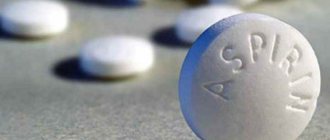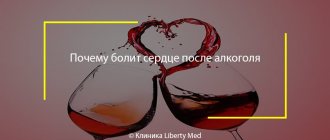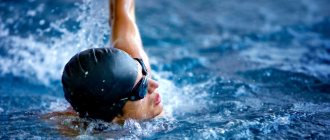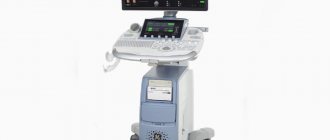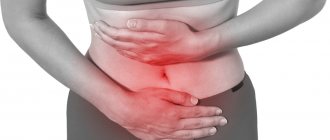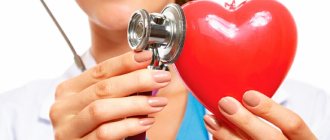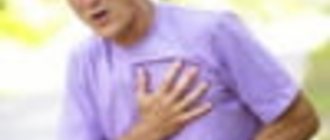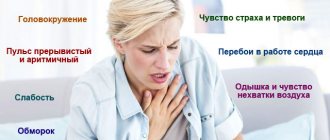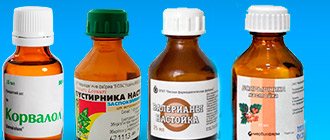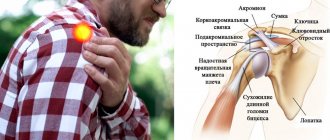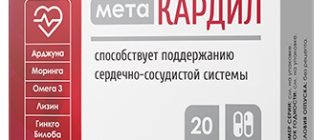The heart is one of the most vital organs in our body.
Any violations in its work can very seriously affect our well-being. Some disruptions to its functioning are quite dangerous and can lead to death or very serious complications. Most often, pain in the heart manifests itself as pain in the chest. Such pain is the most dangerous and requires immediate attention to a medical facility. There are situations when pain in the heart is permanent and manifests itself over a long period of time without worsening your well-being. Such symptoms, as a rule, are not critically life-threatening; they can be managed at home, but it is still worth seeing a cardiologist.
Types of heart pain
According to the mechanism of pain in the heart area, two main types can be distinguished:
- Anginal or ischemic pain - appears when there is a narrowing or complete blocking of blood flow in any artery that supplies the heart with oxygen. This leads to angina pectoris, and subsequently myocardial infarction. These are the most dangerous pains, the consequences of which are quite difficult to predict. In this case, it is strictly forbidden to self-medicate, as you can get very life-threatening complications.
- Cardialgia is all other pain that is not associated with blockage of the blood supplying arteries. Cardialgia can be inflammatory, rheumatic or neurotic in nature. If such pains are permanent, and a person knows the diagnosis, then he can stop their occurrence in certain ways.
How to distinguish cardialgia from anginal pain?
Knowing the clinical manifestations in both cases will help determine what kind of pain you are experiencing.
Anginal pain is characterized by:
- The occurrence of pain after a serious emotional shock or severe physical activity.
- The nature of the pain is pressing or squeezing.
- The pain is localized behind the sternum and spreads to the left side - shoulder, shoulder blade and arm.
- Symptoms may disappear or be significantly reduced after taking nitroglycerin.
- An attack of anginal pain may be accompanied by general weakness, dizziness, excessive sweating or loss of consciousness.
Such a clinical picture is a reason to immediately consult a doctor.
Cardialgia is characterized by the following manifestations:
- The pain is aching or stabbing in nature,
- Painful sensations arise gradually and last for a long time without significant deterioration,
- Most often, the pain is localized to the left of the sternum and does not spread to other parts of the body.
- In this case, the pain does not decrease when taking nitroglycerin, but you can observe a significant improvement in the condition when taking painkillers.
My heart hurts! What to do?
One of the most common reasons for visiting a doctor, especially a cardiologist, is cardialgia, i.e. pain in the heart area. However, this does not always indicate a pathology of our vital organ. First of all, cardialgia may be associated with dysfunction of the nervous system, especially at a young age. In adulthood and old age, the cause of cardialgia can be hormonal imbalance: menopause (especially premature) and the menopausal period.
Very often, cardialgia and thoracalgia (chest pain) are a consequence of osteochondrosis or other pathology of the spine, pathology of the costothoracic joints (Tietze's disease or syndrome) or the so-called intercostal neuralgia (Bronholm's disease).
Pathology of the pleura or lungs (usually inflammatory, less often the result of a neoplasm) is also, as a rule, accompanied by thoracalgia.
In diseases of the esophagus, stomach, and transverse colon, the leading complaint is often discomfort “in the area of the heart.”
If all of the above reasons are absent, most likely thoracalgia is associated with pathology of the cardiovascular system. Moreover, this does not always manifest itself as coronary heart disease (CHD), i.e. angina pectoris (angina pectoris). With sudden increases in blood pressure (crises), cardialgia occurs very often even without the presence of clinically significant ischemic heart disease (so-called hemodynamic angina).
Cardialgia is a leading symptom in inflammatory lesions of the heart muscle (myocarditis) and its outer membrane (pericarditis), and in anemia of various origins (most often iron deficiency). Cardialgia can occur with cardiomyopathies - a kind of degenerative changes in the heart muscle and/or its inner lining (endocardium), tumors of the myocardium or pericardium (both metastatic (more often!) and primary).
Here is a far from complete list of diseases that cause pain in the chest area (only the main, most common ones). But even from this minority of etiological factors (causes) of cardialgia, it is obvious that clarifying the cause-and-effect deviations of this symptom is an insoluble task for the patient and a very difficult task for the doctor. Every patient has the power to facilitate and speed up the diagnostic search for the doctor and help him avoid possible mistakes.
First of all, the patient is required to clarify the location of the pain, its nature (pressing, stabbing, feeling of “heaviness”, etc.), duration (seconds, minutes, hours, days, constant); provoking moments (physical activity (what kind), walking (the distance covered before pain appears on level ground, or climbing a certain number of flights of stairs, cold headwind), stressful situations, etc.). It is very important what medications relieve or relieve pain: nitrates (nitroglycerin tablets or its sprays) or sedatives, i.e. sedatives, which include validol, corvalol and their analogues.
Before visiting a doctor, it is advisable to monitor blood pressure (at least 3-5 times during the day), pulse, paying attention not only to its frequency, but also to its rhythm.
All this does not apply to retrosternal pressing pain that is not relieved by nitrates for more than 10-15 minutes. In this situation, you should call an ambulance team as soon as possible, which has been working for 6 years according to the most modern principles of providing care for suspected myocardial infarction.
In other cases, you should contact a cardiologist (general practitioner if there is no cardiologist on site) of the clinic.
An experienced cardiologist of the highest qualification category works in the Orenburg branch of MMC Medical On Group - Orenburg LLC; it is possible to record and analyze an electrocardiogram, including with physical activity; a complete clinical, biochemical and immunological examination, which ensures rapid diagnosis and prescription of optimal treatment.
Patients are accepted from any city and district of the region, nearby regions, republics, states (Bashkiria, Tatarstan, Kazakhstan).
Cause of heart pain
Anginal pain occurs for a single reason - acute coronary heart disease, which manifests itself in angina pectoris or myocardial infarction. There are many more reasons for cardialgia. Knowing the cause of cardialgia is critically important, as this affects the choice of treatment.
The most common causes of cardialgia are:
- Neurosis. Pain in the heart appears as a response to a large number of negative emotions and psychogenic stimuli.
- Inflammatory heart diseases - myocarditis, endocarditis, pericarditis, myocardial dystrophy, and so on.
- Heart disease that occurs against the background of other systemic diseases - hypertension, diabetes, kidney or thyroid dysfunction.
- Diseases of a rheumatic nature.
- Acquired or congenital heart valve defects.
- Benign tumors in the heart.
IMPORTANT: The cause of pain in the heart can be a fairly large list of diseases and pathological conditions of other organs and systems, which radiate pain to the sternum. For example, inflammation of the gastric mucosa, chronic or acute bronchitis, herpes zoster, intercostal neuralgia, chest injuries, neuroses and disorders of the nervous system, osteochondrosis of the thoracic spine.
When emergency hospitalization is needed for heart pain:
- If pain occurs suddenly,
- If pain occurs early in the morning or at night, when eating, under severe stress or after severe physical activity,
- If the pain is intense and unbearable, causing a burning sensation, pressure, squeezing or tearing,
- The pain radiates to the left side of the body, sometimes spreading to the stomach or back,
- The intensity of pain does not change with changes in body position, inhalation and exhalation,
- The pain is accompanied by shortness of breath, fear of death, panic, weakness, pale or cyanotic skin, nausea, vomiting and loss of consciousness.
The presence of at least some of these signs indicates the need for immediate hospitalization.
Self-help for chest pain
Pain in the heart area can be a manifestation of such forms of coronary heart disease as angina and myocardial infarction. In these cases, assistance should be provided as soon as possible. You need to know that not all chest pain is a symptom of heart disease.
Local stabbing, “shooting” pain in the chest, the nature of which changes when turning the body, applying pressure, or taking a deep breath, as a rule, does not require emergency treatment and is a manifestation of various types of dorsopathies (diseases of the spine). Usually in these cases the patient can point to the source of pain with one finger (though not always). Isolated pain in the abdomen, shoulder blades, back, shoulders, neck and lower jaw are rarely associated with coronary (cardiovascular) pathology. A typical painful attack with angina pectoris usually develops after physical activity; provoking factors are cold, windy weather, a stressful situation, smoking, and large meals.
Pain of cardiac origin, in the vast majority of cases, is localized behind the sternum or in the left half of the chest and has a sufficient area: the patient at the time of the attack indicates the source of pain by applying the palm of his hand, sometimes pointing to the entire surface of the chest. An anginal (painful) attack is accompanied by heaviness in the heart area, pressing or tearing pain, and burning. Patients often describe the pain, comparing it to a stone or slab squeezing the chest. In people suffering from hypertension due to coronary heart disease, increases in blood pressure are often accompanied by pain in the heart.
- If an attack develops during physical activity, incl. When walking, you need to stop. The patient needs to sit down; it is not advisable to lie down. If the attack occurs while lying down, you need to sit up and lower your legs. The goal is to reduce the load on the heart and cause blood to flow to the legs. Provide access to fresh air - open a window, unbutton your collar. For patients with chronic heart failure, manifested by shortness of breath, take a sitting or lying position with a high headboard.
- Take 1 tablet of nitroglycerin or 1-2 doses of nitro-containing spray under the tongue. Relief should occur within 1-2 minutes. If the effect is insufficient, repeat taking the drug after 3-5 minutes. To get the full dose of the drug when using a spray, the first dose of the drug is released into the air, and the second - under the tongue. Do not use nitrates while standing; fainting may occur due to a short-term decrease in blood pressure. Nitroglycerin increases intracranial pressure, which in some patients results in headaches. Do not use nitroglycerin and sprays if there is no pain and if blood pressure is significantly reduced (upper pressure is below 90 mmHg, with usually normal values at 120\80 mmHg). Do not put handfuls of tablets under your tongue and do not use several doses of the spray at a time, this is dangerous for the development of serious complications. After taking nitrates, do not get out of bed abruptly; first, spend some time in a sitting position.
- Measure your blood pressure. If it is elevated, take measures to reduce it (hypertensive drugs prescribed by your doctor).
- For severe restlessness and anxiety, take 40-60 drops of Corvalol or Valocordin, or tincture of motherwort, valerian (if there are no contraindications).
- If heart pain is not relieved within 15-20 minutes (with nitrates taken 2-3 times), call an ambulance. Before the ambulance team arrives, the patient needs to take aspirin (in the absence of contraindications: peptic ulcer, allergic reaction) in a dosage of 160-325 mg, and the tablets should be chewed. Use aspirin even if you have already taken it that day.
- Prepare the latest cardiogram performed on you and discharge summaries (extracts) from hospitals, if any.
Cardiologist of therapeutic department No. 2 Yulia Yurievna Ivanova
What can you do at home before the ambulance arrives?
If acute chest pain occurs, it is necessary to record the time of the attack and immediately call an ambulance. Over the phone, describe the symptoms of occurrence: the presence of a stress factor or serious physical activity, the nature of the pain, the presence of pale skin or shortness of breath, and so on.
Before the medical team arrives, it is important to do the following:
- Try to calm the patient without using any medications,
- It is convenient to sit or lay the patient down, avoiding a position on the left side,
- Ensure air flow into the room,
- Remove clothes or unbutton them so as not to interfere with the free position of the body,
- Give one aspirin tablet, it will help make the blood less thick, which will improve blood circulation,
- Give a nitroglycerin tablet under the tongue, but if you are not sure that the pain is due to cardiac pathology, it is better to abandon this step. Nitroglycerin has the ability to dilate blood vessels and reduce blood pressure, which can be extremely dangerous for hypertensive patients.
- If the pain does not subside, then give another nitroglycerin tablet. It is allowed to take 3 tablets of nitroglycerin at intervals of 5 minutes. Even if the patient felt better after 20 minutes and the attack was stopped, hospitalization is still required to establish a diagnosis.
Heart attack. Main features. First aid
The term “heart attack” is used outside the professional sphere of activity of a medical worker, in everyday life, and also for educating the population.
For patients with an established diagnosis of coronary heart disease (CHD) and habitual angina, the concept of “heart attack” includes an intractable and prolonged attack of angina or a painful attack during myocardial infarction.
For groups at risk of developing coronary artery disease and the rest of the population, a “heart attack” is often a first-time attack of angina, as a manifestation of unstable angina or incipient myocardial infarction, requiring emergency care.
Up to 50% of all those who die from myocardial infarction die within the first hour of the onset of a heart attack and before they arrive at the clinic. That’s why it’s so important to know the symptoms of a heart attack, emergency care algorithm and measures that will help save precious minutes of the “first golden hour”.
The main signs indicating the presence of a heart attack:
- X nature of the pain: pressing, burning, squeezing, heartburn-type or vague discomfort, accompanied by a painful feeling of melancholy and anxiety. Typical comparisons: as if “a heavy stone (slab) was placed on the chest”, “the heart was squeezed in a vice”, “a stake was driven into the chest”, “boiling water was poured into the chest”, “it twists the shoulder”, “everything inside is burning”, etc. d. Another name for an angina attack is “angina pectoris.”
- Intensity of pain: from moderate discomfort in the chest (but clearly attracting attention) to unbearable pain (moaning, screaming).
- Localization of pain: behind the sternum, along the anterior surface of the chest, in the heart area, in the left half of the chest (clavicle, shoulder, forearm, scapula, left half of the neck, lower jaw), in both shoulders, shoulder blades, in the lower chest with grip upper abdomen, in the epigastric region.
- The area of pain: large, wide, without clear boundaries, the patient shows it with his entire palm or fist.
- Duration of pain: from several minutes to 2-3 hours, often the pain is wave-like with an interval of 1-5 hours, the second or third waves are usually more intense.
- The connection between pain and body position, the act of breathing: uncertain or absent.
- The patient’s behavior during an attack: as a rule, pain causes the patient to feel fear or anxiety for his life; he stops working, stops or sits down; sometimes there is severe weakness (“cotton legs”), vegetative reactions (pallor or redness of the face, “cold sweat,” feeling of heat, perspiration); Possible nausea, single or double vomiting, severe shortness of breath up to suffocation. In some cases, the patient “can’t find a place for himself”: gets up, sits down, walks around the room, holds his hand on his sternum, the collar of his shirt is unbuttoned. Never smiles or cries; relatives often cry.
In such a situation, the main thing for the patient and his relatives or friends (if they are nearby) is not to get confused and not to panic. Because the effectiveness of further medical care depends on their actions in the first minutes after the onset of symptoms of a heart attack.
Necessary:
- urgently take (chew and swallow) one tablet of aspirin (acetylsalicylic acid) in a dose of 0.5 g and one tablet (capsule, inhalation) of nitroglycerin under the tongue. A contraindication for taking aspirin is only its intolerance: allergic reactions, “aspirin” asthma or obvious exacerbation of gastric ulcer;
- provide peace and access to fresh air;
- repeat taking nitroglycerin if pain persists after 3-5 minutes. You should know that nitroglycerin may lose its effectiveness in open tubes, so you should always have a new, unopened tube (preferably inhaled nitroglycerin - “nitromint”, “isoket”, “aerosonite”, etc.);
- Call an ambulance by calling 103 and take another nitroglycerin tablet if the pain persists after 3-5 minutes .
Sample diagram of the text of an ambulance call
“Today at ... o’clock minutes (who, age) experienced chest pain (of another location). After taking nitroglycerin (indicate the number of tablets taken), aspirin, the pain persists. Previously there were no such pains (if there were, then indicate when, if the patient previously suffered a myocardial infarction, then indicate when).” Next, answer the operator’s questions.
Before the ambulance arrives, relatives (other persons) must prepare:
- electrocardiogram (ECG) films – if available, other medical documents (certificates, hospital extracts, etc.);
- passport;
If, after taking nitroglycerin, severe weakness and sweating appear, you should not panic, you should remain calm; lie down with your legs elevated (on a bolster, etc.), drink 1-2 glasses of water. Relieves headaches caused by nitroglycerin by dissolving validol tablets. If signs of poor tolerability of nitroglycerin appear (excessive decrease in blood pressure, headache, weakness, dizziness), there is no need to repeat its use.
It must also be remembered that during ischemic attacks, nitroglycerin should not be taken in case of weakness, sweating in combination with pallor of the skin (with low blood pressure), with acute impairment of vision, speech, coordination of movement (if a cerebrovascular accident is suspected), as well as after taking sildenafil ("Viagra").
What should be in an apartment to provide emergency care?
Every family must have a First Aid Kit with a set of medicines, dressings and other items for first aid.
In those families where there are patients with coronary heart disease (regardless of its form), people of retirement age, men over 35 years of age and women over 40 years of age who have risk factors for the development of coronary heart disease (arterial hypertension, diabetes mellitus, etc.) ) and/or whose profession is associated with constant stress and increased risk (managers, drivers, etc.), it is necessary to have an “Emergency First Aid Kit” containing aspirin, nitroglycerin, with an algorithm for their use in case of a heart attack.
Remember! The ability to act competently and quickly, to provide assistance and self-help during a heart attack is a guarantee of saving your life!
What can be done at home if hospitalization is not required?
If the pain in the heart is of the nature of cardialgia, then emergency hospitalization is not required; the patient can be helped at home. But in these cases, it is important to know what kind of disease you are dealing with.
Angina pectoris pain can be relieved by:
- Mustard plasters in the heart area. In five minutes it will dilate the blood vessels and cause blood flow. In addition, the burning effect of mustard will distract you from unpleasant sensations. Mustard plasters should be kept for no more than 20 minutes.
- The pepper patch has a similar effect; you should also not keep it on for more than 20 minutes.
- Mustard foot bath - dissolve a tablespoon of water in two liters of warm water, soak your feet for 10-15 minutes.
- Fir oil – rub 10-15 drops into the chest area for 5-7 minutes.
- 4-6 drops of validol per piece of sugar or in the form of one tablet under the tongue, the effect of the drug will begin in 2-3 minutes.
For high blood pressure and heart pain, alternating baths with cold and hot water will help. 10 minutes of contrasting alternation is enough - 2 minutes in hot, 20-30 seconds in cold.
For hernia and heart pain, drink half a glass of water with a dissolved teaspoon of soda.
For pain in the heart due to neurosis, depression or depression:
- Mix herbs in equal proportions - motherwort, peony, valerian, hawthorn. Pour one teaspoon of the mixture into a glass of boiling water, let it cool and divide into three parts. Drink 1/3 part in slow sips.
- Mix lemon balm and caraway herbs in equal proportions, brew a teaspoon of the mixture with boiling water, let it brew and strain. Divide into three parts and drink 1/3 part in slow sips.
What not to do if you have heart pain at home:
- Intense physical movement or exercise will only make the situation worse,
- Nervous
- Breathing deeply, doing any breathing exercises or massage can lead to a blood clot breaking off.
Characteristic signs (symptoms) of a heart attack (myocardial infarction):
sudden (paroxysmal) pressing, squeezing, burning,
aching pain in the chest (behind the breastbone), lasting more than 5 minutes;
similar pains are often observed in the area of the left shoulder (forearm),
the left shoulder blade, the left half of the neck and lower jaw, both shoulders, both arms, the lower part of the sternum along with the upper part of the abdomen;
lack of air, shortness of breath, severe weakness, cold sweat, nausea - often
occur together, sometimes follow or precede chest discomfort/pain;
Often these manifestations of the disease develop against the background of physical or
psycho-emotional stress, but more often with some interval after them. Uncharacteristic signs that are often confused with a heart attack:
stabbing, cutting, pulsating, boring, constant aching pain for many hours and not changing its intensity in the heart area or in a specific clearly defined area of the chest.
Algorithm of urgent actions:
If you or someone else suddenly has the above characteristic signs of a heart attack, which last more than 5 minutes, even with weak or moderate intensity, do not hesitate, immediately call an ambulance team. Do not wait more than 10 minutes - in such a situation it is life-threatening.
If you have symptoms of a heart attack and there is no way to call an ambulance, then ask someone to take you to the hospital - this is the only right decision. Never drive yourself unless you have no other choice.
In the best case scenario, if a heart attack occurs, you should follow the instructions received from your doctor, if such instructions are not available,
then you need to act according to the following algorithm:
Immediately after an attack occurs, sit down (preferably in a chair with armrests) or lie in bed with the head of the bed raised, take 0.25 g of acetylsalicylic acid (aspirin) - chew the tablet, swallow, and 0.5 mg of nitroglycerin - spray one inhalation dose into the oral cavity when holding your breath, place the tablet/capsule under the tongue, bite the capsule first, do not swallow; free your neck and provide fresh air (open the vents or windows). If after 5-7 minutes. After taking acetylsalicylic acid (aspirin) and nitroglycerin, the pain persists; it is imperative (life-saving) to call an ambulance and take nitroglycerin a second time. If pain persists 10 minutes after taking the second dose of nitroglycerin,
it is necessary to take nitroglycerin for the third time.
If after the first or subsequent doses of nitroglycerin there is severe weakness, sweating, shortness of breath, you need to lie down, raise your legs (on a bolster, etc.), drink 1 glass of water and then, as with a severe headache, do not take nitroglycerin. If the patient has previously taken drugs that lower blood cholesterol from the statin group (simvastatin, lovastatin, fluvastatin, pravastatin, atorvastatin, rosuvastatin), give the patient his usual daily dose and take the drug with you to the hospital.
Attention! A patient with a heart attack is strictly prohibited from standing up, walking, smoking or eating until specifically authorized by a doctor.
You should not take aspirin (acetylsalicylic acid) if you are intolerant to it (allergic reactions), as well as with a clear exacerbation of gastric and duodenal ulcers.
You should not take nitroglycerin in case of severe weakness, sweating , as well as severe headache, dizziness, acute impairment of vision, speech or coordination of movements.
Remember, that:
Only emergency medical care called in the first 10 minutes from the onset of a heart attack allows the full use of modern highly effective methods of inpatient treatment and reduces mortality from these diseases many times over. Being intoxicated is not a reasonable reason to delay calling an ambulance in the event of a heart attack. About 30% of people who died suddenly at home were under the influence of alcohol. Closed cardiac massage, performed in the first 60-120 seconds after sudden cardiac arrest, allows up to 50% of patients to be brought back to life.
Source: Boytsov S.A., Ipatov P.V., Kalinina A.M., Vylegzhanin S.V., Gambaryan M.G., Eganyan R.A., Zubkova I.I., Ponomareva E.G., Solovyova S. B., “Organization of clinical examination and preventive medical examinations of the adult population.” Guidelines. 2nd edition with additions and clarifications, M., 2013.
Preventing heart pain
Treatment of heart pain can be more successful, and pain syndromes less severe, provided that the disease is regularly prevented.
Here are simple ways to prevent heart problems:
- Physical activity. The heart is a muscle that needs training. Moderate and regular physical activity, which primarily trains endurance, will be a good means of prevention.
- Staying calm. Stress is one of the main triggers of heart problems, so it should be avoided. You can regain your calmness through breathing exercises, meditation or professional help from a psychologist. In consultation with your doctor, you can take sedatives and sedatives.
- Proper balanced nutrition. Getting enough potassium in your diet is essential for heart function. It can be found in sufficient quantities in grapefruits, seafood and nuts. You should avoid or minimize the consumption of fatty and salty foods.
- Rejection of bad habits. Drinking alcoholic beverages and smoking is another significant factor in the occurrence of heart problems. In addition, they can nullify all the above methods of prevention; they simply will not make any sense.
Remember that all folk remedies only reduce the degree of pain and do not have an analgesic or vasodilating effect. Therefore, it is imperative to consult a cardiologist to determine the cause of heart pain and select the optimal treatment method.
How to relieve an attack of arrhythmia?
Pathologies of the heart and blood vessels are the most common reasons for providing emergency medical care. Typically, resuscitation measures are carried out for myocardial infarction and other acute conditions, but a contraction rhythm disorder can be no less dangerous. In order to understand how to relieve an attack of arrhythmia, you need to know the features of the course of the disease. Additionally, not all cases require treatment. A consultation with a cardiologist will help you find out all the aspects of treating a pathology such as cardiac arrhythmia: how to relieve an attack, and whether surgery is needed.
Arrhythmia Information
Disorders of the heart, characterized by an irregular heartbeat rhythm, are called arrhythmia. In the medical literature, different forms of the disease are distinguished depending on the clinical picture and cause of occurrence. The most common forms include tachycardia and bradycardia. The disease is primarily dangerous due to hemodynamic disturbances and the risk of severe complications. The most dangerous complication of arrhythmia is ischemic stroke.
Being the most active muscular organ, the heart continuously contracts and delivers oxygen along with nutrients to all tissues. Developed external and internal forms of regulation ensure the constancy of hemodynamics. An electrical impulse that causes contraction of muscle fibers occurs in the sinus node of the upper parts of the heart and spreads through secondary nodes to all parts of the myocardium. A slight delay in the transmission of the signal from the atria to the ventricles allows the chambers of the heart to fill with blood before contracting. Thus, the special rhythm of the heart is set by the sinus node. External nervous and humoral influences can only temporarily change the rhythm.
8
24/7
Main forms of arrhythmia:
- Fibrillation is the occurrence of frequent and chaotic contractions of the atria or ventricles myocardium. In the most dangerous form of the disease, ventricular fibrillation, the heart rate can reach 600 beats per minute. A common complication of atrial fibrillation is cardiac arrest.
- Tachycardia is the occurrence of rapid heartbeat (more than 100 beats per minute).
- Bradycardia is the occurrence of too rare myocardial contractions (no more than 60 beats per minute).
- Flutter is a disorder of the rhythm of contractions of the atria or ventricles, characterized by rapid and inconsistent heartbeats. It is also a common complication of heart surgery.
- Extrasystole is the occurrence of an additional contraction immediately after systole. Normally, there is a short rest interval between contractions, during which the chambers of the heart fill with blood.
Clarifying the form of myocardial rhythm disturbance is important in order to understand how to relieve an attack of arrhythmia. Treatment of primary pathology of the cardiovascular system is often required.
Causes and risk factors
The mechanism of development of arrhythmia is in many ways similar to other heart diseases. This may be a consequence of abnormal development of the organ in the prenatal period, an infectious disease or injury. In addition, rhythm disorder may be a complication of the primary disease.
Main reasons:
- Damage to the conductive elements of the heart during ischemia and myocardial infarction.
- Disturbance of the heart valves.
- Consequences of heart surgery.
- Toxic myocardial damage.
- Nervous regulation disorders.
- Thyroid diseases.
- Imbalance of electrolytes in the blood.
- Abuse of caffeine and alcoholic beverages.
- Addiction.
- Breathing disorder during sleep.
- Thickening of the myocardium and enlargement of the heart parts against the background of high loads.
There are also risk factors that can increase the likelihood of arrhythmia. The main factors include:
- Obesity and sedentary lifestyle.
- High blood pressure.
- Diabetes mellitus and atherosclerosis of heart vessels.
- Panic attacks.
- Lung diseases.
- Poor nutrition.
- Old age.
It should be borne in mind that the listed risk factors are common to many cardiovascular pathologies, so heart attack prevention is also a measure to prevent arrhythmia.
An important feature is the origin of the rhythm disorder. A person's heart may begin to beat faster due to physical activity. In this case, the natural form of tachycardia is due to the adaptation of the heart to the high needs of muscle tissue. Pathological tachycardia occurs at rest and does not meet the current requirements of the body.
8
24/7
Symptoms
The disease usually manifests itself during attacks. The rest of the time, the cardiovascular system can operate as usual. That is why the intensity of symptoms largely depends on the frequency of attacks. Some patients do not even notice rare interruptions in the functioning of the heart, while others constantly suffer from insufficient blood circulation. Knowing the characteristics of the course of the disease is important in order to find out how to relieve an attack of arrhythmia at a specific moment.
Possible symptoms:
- Substernal pain.
- Sensation of pulsation in the temple area.
- Dyspnea.
- Dizziness and nausea.
- Brief loss of consciousness.
- Increased sweating.
- Anxiety.
The asymptomatic course of the disease is typical mainly for children and adolescents. The presence of other chronic heart pathologies may aggravate symptoms.
Diagnostic methods
The main way to identify heart rhythm disorders is instrumental diagnosis. Before prescribing therapeutic and diagnostic procedures, the doctor will find out complaints, examine the medical history for previous diseases and risk factors, and also conduct a physical examination. Auscultation of the heart, study of the pulse and tonometry are methods of primary diagnosis. However, outside of attacks, heart function may not be impaired, so additional methods are always required.
Additional diagnostics:
- Electrocardiography is a study of the bioelectrical activity of the heart. To obtain a cardiogram, a special device and electrodes are used that are attached to the patient’s body. Cardiography results indicate a delay in impulse conduction and other disorders of the conduction system.
- Echocardiography – methods of visualizing the heart using ultrasound equipment. A special sensor sends high-frequency sound waves to the myocardial area and forms an image of the organ on the monitor using reflected waves. The method is effective for assessing the severity of the condition and finding the cause of rhythm disturbances.
- Holter monitoring is a long-term study of heart function using a portable cardiogram recording device. During the examination, the patient goes about his normal activities and presses a button on the device if symptoms occur.
- Stress test is a method of recording a cardiogram during physical activity. To stimulate increased heart function, exercise equipment and special medications are used. This procedure is useful if the patient experiences an arrhythmia attack only during exercise.
- Study of heart vessels using angiography. Based on the results, one can judge whether they are blocked or narrowed.
- Blood test for thyroid hormones, minerals and heart attack indicator enzymes.
- Computed tomography and magnetic resonance imaging - scanning the heart and blood vessels to detect the source of the rhythm disorder.
Only a comprehensive diagnosis will help figure out how to relieve an arrhythmia attack in a particular patient. Screening methods are important if there are other heart diseases that can cause arrhythmia.
How to quickly relieve an attack of arrhythmia?
After receiving the results of the examination and making a final diagnosis, the doctor may prescribe medication or surgical treatment. The treatment regimen depends on the form of the rhythm disorder, the frequency of exacerbations and other factors. As a rule, drug therapy is justified for uncomplicated disease.
Medication prescriptions:
- Direct antiarrhythmic drugs as symptomatic treatment.
- Glycosides, beta blockers and other drugs that affect the myocardial conduction system.
- Anticoagulants for blood thinning and stroke prevention.
If the initial prescriptions do not help, you need to make an appointment with your doctor again. The cardiologist can change the dosage and explain how to relieve an arrhythmia attack. In case of fibrillation, resuscitation measures aimed at quickly correcting the rhythm may be required.
Surgical Treatment Options
Surgery is often a more reliable method of rhythm correction. This method of treatment is indicated for severe arrhythmia and ineffectiveness of drug therapy. Depending on the type of pathology, the following methods of surgical correction may be prescribed:
- Radiofrequency catheter ablation is the removal of the affected area in the myocardium using an electric current. This is a fairly simple and safe procedure that does not require open surgery.
- Implantation of devices that normalize heart rhythm during an exacerbation of the disease. A patient with a pacemaker does not need to think about how to relieve an arrhythmia attack.
- Surgery of structural pathologies of the heart and blood vessels.
When the first symptoms of heart rhythm disturbances appear, it is recommended to consult a doctor. Early diagnosis allows for great success. A specialized specialist will be able to explain all the features of such a condition as atrial fibrillation: how to relieve an attack, and what treatment options exist.
8
24/7
